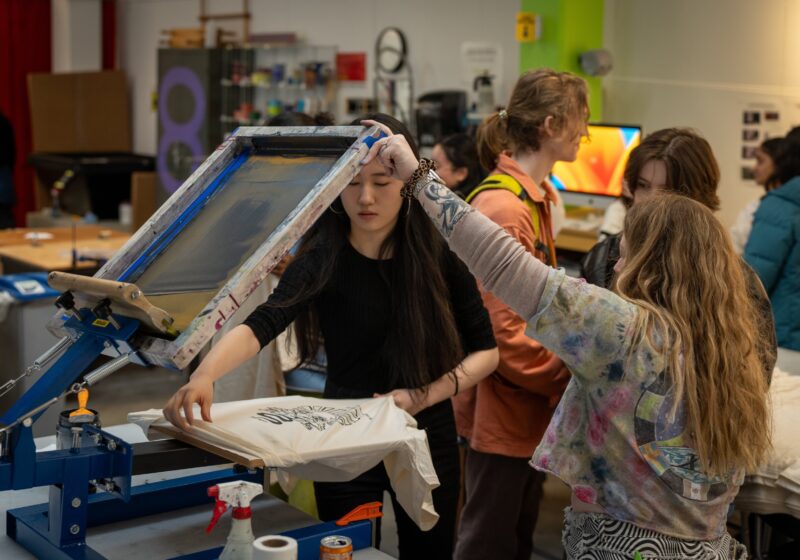Despite the apparent drop in H1N1 cases of late, experts urge students to continue to take caution when dealing with the flu strain.
Young people are at an increased risk for hospitalization due to H1N1 related complications this past winter season.
‘Eighteen to 24-year-olds are six times more likely to be hospitalized this flu season compared to usual,’ Health and Human Services Secretary Kathleen Sebellius said to campus journalists during a phone-in press conference on Tuesday. ‘You can protect yourself by getting vaccinated.’
Public health officials are encouraging everyone to get vaccinated to prevent another spike in H1N1. Despite shortages earlier in the season, the H1N1 vaccine is now available to everyone.
According to Linda Dudman, associate director of Health Promotion at University Health Service, 462 full-time students (undergraduates and graduates) reported symptoms of H1N1 last semester. Over 1,000 undergraduates from the River Campus and Eastman have received the vaccine so far.
UHS still has H1N1 vaccine supply and it is free for all full-time students. Students should bring their insurance card with them to the appointment.
Although nationwide flu rates dropped in January, experts say H1N1 is still dangerous. Stephen Redd, a Centers for Disease Control and Prevention expert on pandemics says that this is not unusual.
‘The flu is unpredictable,’ Redd said. ‘It tends to come in waves.’
He added that flu rates typically fall in January and then peak in mid-February.
The CDC and the Department of Health and Human Services are using social media to influence people to take the vaccine.
On Jan. 14, the CDC released the ‘I’m a Flu Fighter’ Facebook application. This application lets people tell their friends about their vaccination status for swine flu or seasonal flu. Users can choose to be one of several superhero flu fighting characters, publicly declare their vaccination status, and challenge friends to get vaccinated.
The government has set up a Web site, www.flu.gov, where people can access the latest updates on the flu, send e-card vaccination reminders to friends and family and find vaccine clinics.
Sebellius stressed that the vaccine is safe and effective. The H1N1 vaccine is made the same way as the seasonal flu vaccine. So far, 94 percent of reported adverse effects associated with the H1N1 vaccine are ‘non-serious,’ and most involve soreness or redness at the site of injection.
‘You will probably have some redness and soreness where you got the shot,’ Dr. David Topham, a member of the Center for Vaccine Biology and Immunology at UR said. ‘As an immunologist, I think that’s a good sign. If you get a shot and your body reacts, that’s a good thing. It means your immune system is working.’
H1N1 caught the world by surprise in April 2009 by presenting a genetically distinct strain of flu. This strain has been particularly devastating to young people. Between April 24, 2009 and Dec.12, 2009, the CDC estimates that of the approximately 55 million cases of H1N1 in the U.S., approximately one in three affected children under age 18.’ ‘
In New York State, between April 2009 and Jan. 23 2010, 31 of the 94 H1N1-related deaths were people 24 years old or younger. More than 99 percent of current flu cases are of the H1N1 strain, but the seasonal flu is expected to pick up at the end of January.
Measuring exact numbers of flu cases is extremely difficult, so estimates tend to be imprecise and vary greatly. The CDC stresses that most calculations are misinterpretations due to underreporting.’
Since April 2009, H1N1 has already taken approximately 11,000 lives, with some estimates as high as 16,000. By comparison, seasonal flu kills an average of 36,000 Americans per year.’ ‘
As for Luke, he hopes that no one else has to suffer the ordeal he struggled through.’
‘The vaccine would have prevented all of it,’ Duvall said on his flu.gov profile. ‘If you don’t want to do it for yourself do it for others, because this doesn’t just affect you, it affects whole towns and communities.’ Do it for them, do it for yourself, but by all means, just do it.’
For more information, visit www.cdc.gov or the N.Y.S. Department of Health.
Sahay is a member of
the class of 2010.
‘




